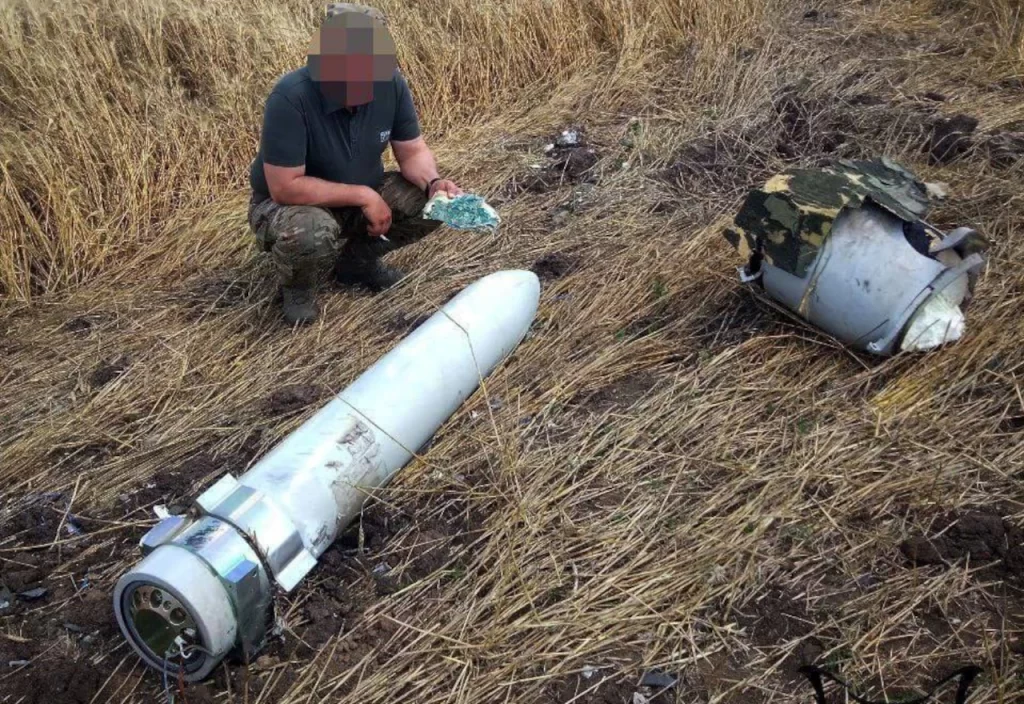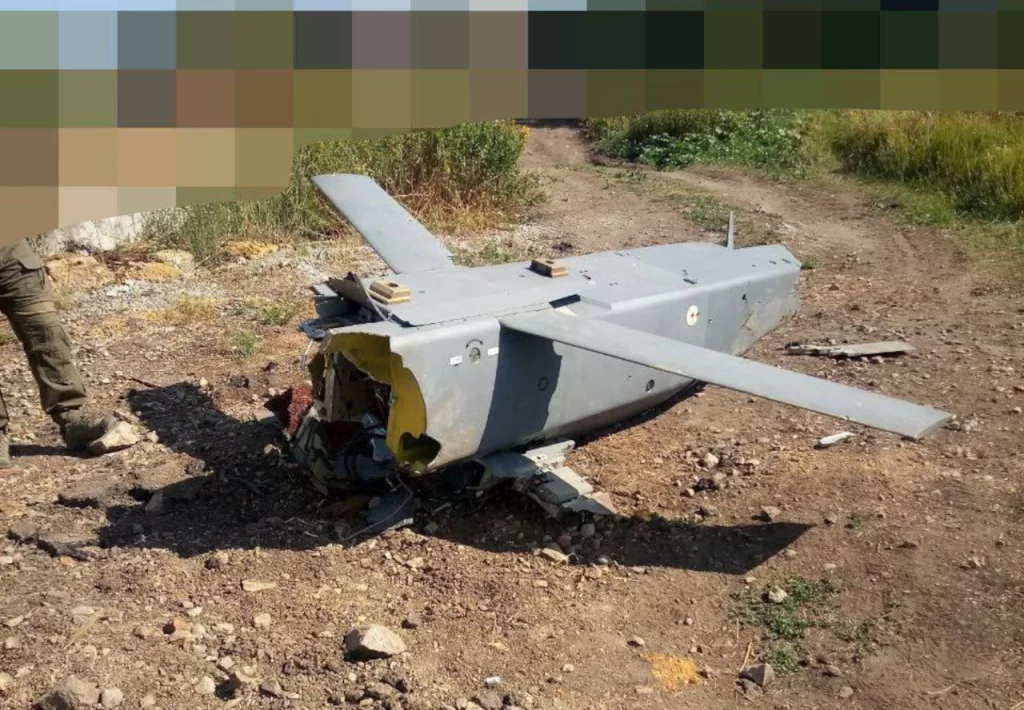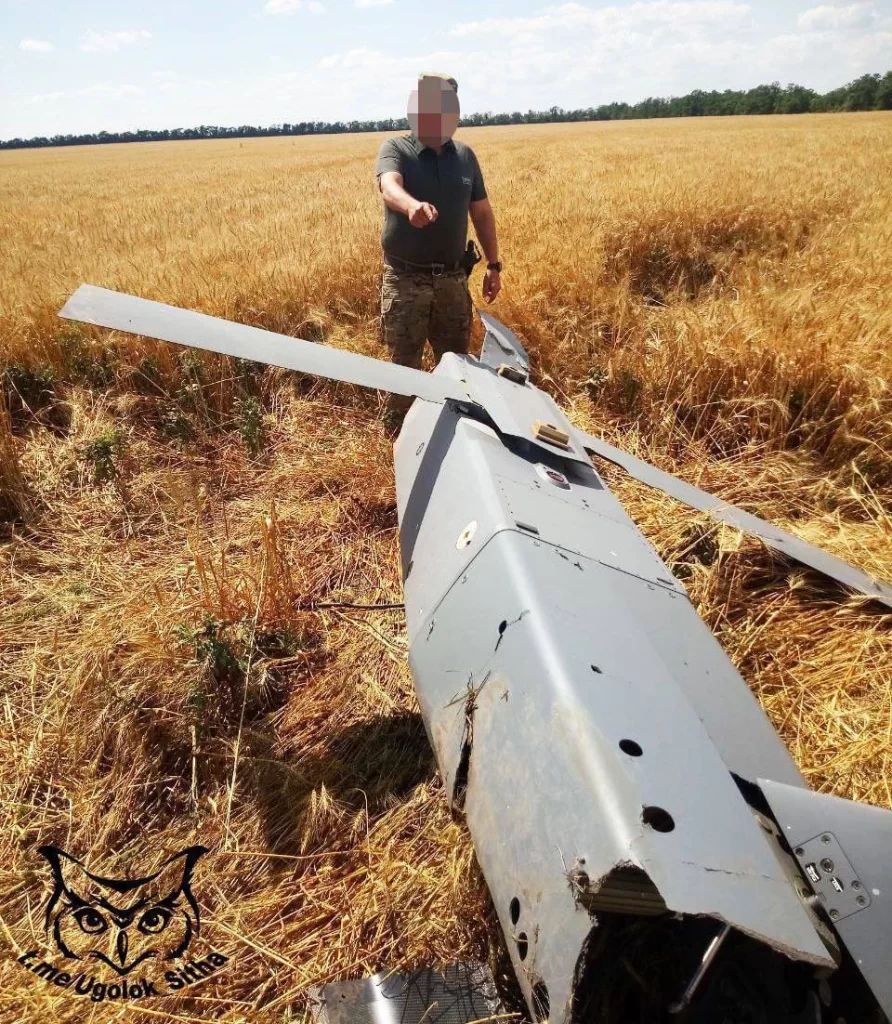On the morning of July 4th, Russian and foreign military-technical portals were flooded with photos of the large components of the glider and internals of the British low-observable tactical cruise missile Storm Shadow, which had been intercepted by Russian anti-aircraft missile systems in the Berdiansk operational direction.
As per the Russian EAPortal, Storm Shadow was intercepted by either a light high-speed combat stage of the 57E6 SAM (with a 20kg warhead) from the Pantsir-S1/SM SAM-gun complex or by the prospective 9M338K (RZV-MD) SAM of the Tor-M2U air defence missile system, judging by the minimal damage to the fuselage and the bending in the central body.

The appearance of this photo, taken by the fighters of the “Kuban/Bars-11” detachment on the Zaporizhzhia front, indicates that the platoons and batteries of the Pantsir-S1/SM and Tor-M2U ADMS on this missile-dangerous direction have finally been equipped with prospective radar detectors for low-/medium-altitude modes, the 48Ya6-K1 “Podlyot-K1,” capable of detecting British Storm Shadow with a radar cross-section of 0.01 square meters at distances of about 25-30 km and providing target designation for the UBCP “Ranzhir-M,” as well as for the combat crew terminals of the Pantsir-S1 ADMS. This significantly cut down the time needed to acquire British missiles for auto-tracking, lock-on, and interception by eliminating the inadequate energy capacity of the Tor-M2U detectors and the radar detection of the “Pantsir-S1” SAM SOC complexes. Errors that were previously made in terms of structure and technology have been fixed.

The interesting part of this scenario is the near-complete preservation of the critical component base of the onboard radio-electronic equipment of the captured Storm Shadow missile. Some important components available for the Russians to study are the missile’s inertial navigation unit, GPS correction module, jam-resistant antenna with a narrow directional pattern and shielding of the lower hemisphere, and the infrared correlation and terminal guidance sensor.
The target selection controller is based on the infrared signature detected by the IR sensor from a distance of approximately 20-15 km, depending on the size and thermal signature of the targets.
Other important components include the power controllers of the onboard radio-electronic equipment and the missile’s battery, the digital fuel supply system for the Turbomeca Microturbo TRI 60-30 turbojet engine and the structural features of the engine’s integrated motor housing’s tail section.
By looking at the antenna’s gain coefficient at different angles of the directional pattern, experts from the Central Scientific Research Institute of Air Defence Forces and a few Russian defence companies will be able to figure out how resistant the product is to both non-directional and directional jamming caused by the Russian radio-electronic countermeasure systems. This study will help change electronic warfare systems on the ground and, if possible, in the air that covers the frequency ranges of 1,575.42 MHz (L1) and 1,227.6 MHz (L2).
Analysing the type and generation of the infrared correlation and terminal guidance sensor’s matrix photodetector, as well as determining its operating range – mid-wave or long-wave, i.e., 3-5 m or 8-12 m, respectively, will allow determining Storm Shadow’s effective range for detecting heat-contrast targets in conditions of high dust and smoke in the atmosphere, as well as on a heated underlying surface with low contrast against the surrounding environment. The ability of infrared radiation to penetrate in the 8-12 m range is substantially higher than in the 3-5 m range in complex meteorological conditions and a smoky atmosphere.

Mid-wave infrared, between 3 and 5 m, is better for finding, selecting, and attacking low-contrast heat-emitting objects when the weather is good. The infrared correlation and guidance units of Storm Shadow missiles are likely bistatic, so they can choose targets more reliably, even when there is natural or artificial interference from optoelectronics. The target object must be covered by special laser-beam modules mounted on a turret that disable the IR sensor photodetectors to prevent these missile guidance sensors from functioning.
It may refer to ground-based modifications of airborne optoelectronic countermeasure systems such as the 101KS-O, which are deployed on multi-role fighters such as the Su-57, as well as similar turret modules integrated into the L-370 “Vitebsk” onboard defence systems.
Moreover, the preserved glider elements with radar-absorbing materials can be placed in an anechoic chamber, allowing for a more accurate determination of the missile’s effective reflective surface from various exposure angles and in different wavelength ranges corresponding to specific radar complexes used by Russia’s air defence and aerospace forces.

